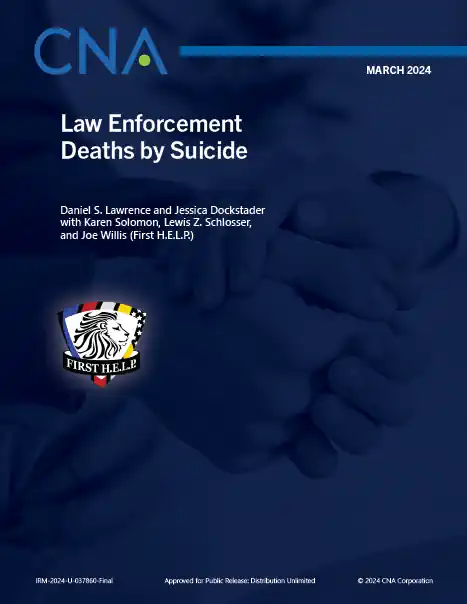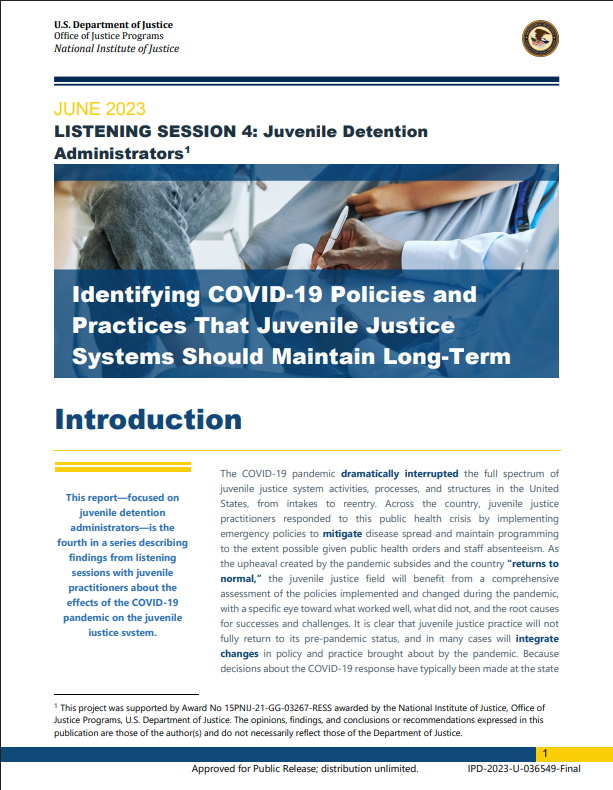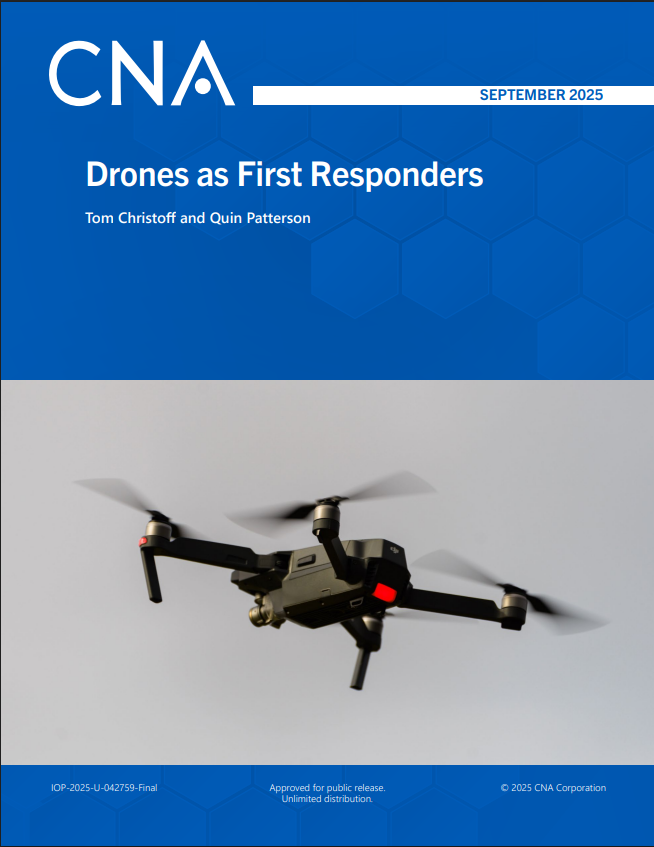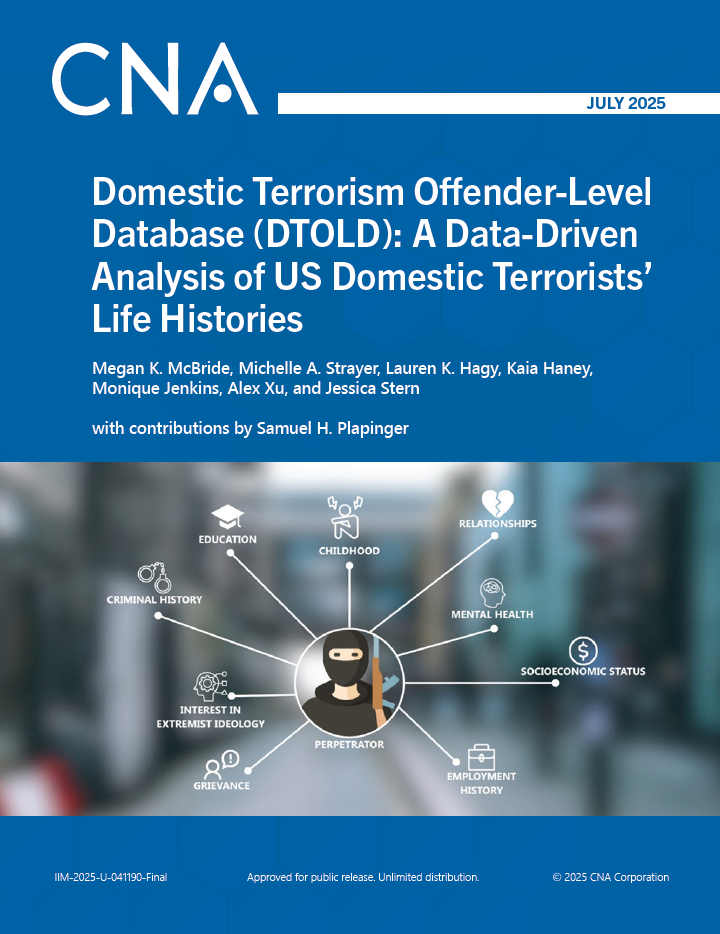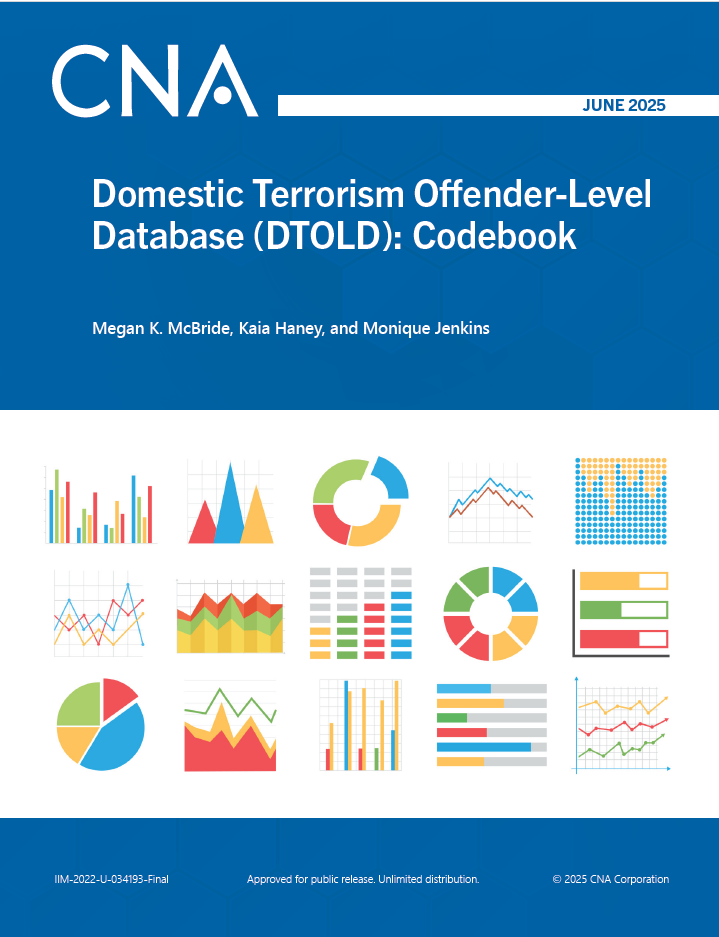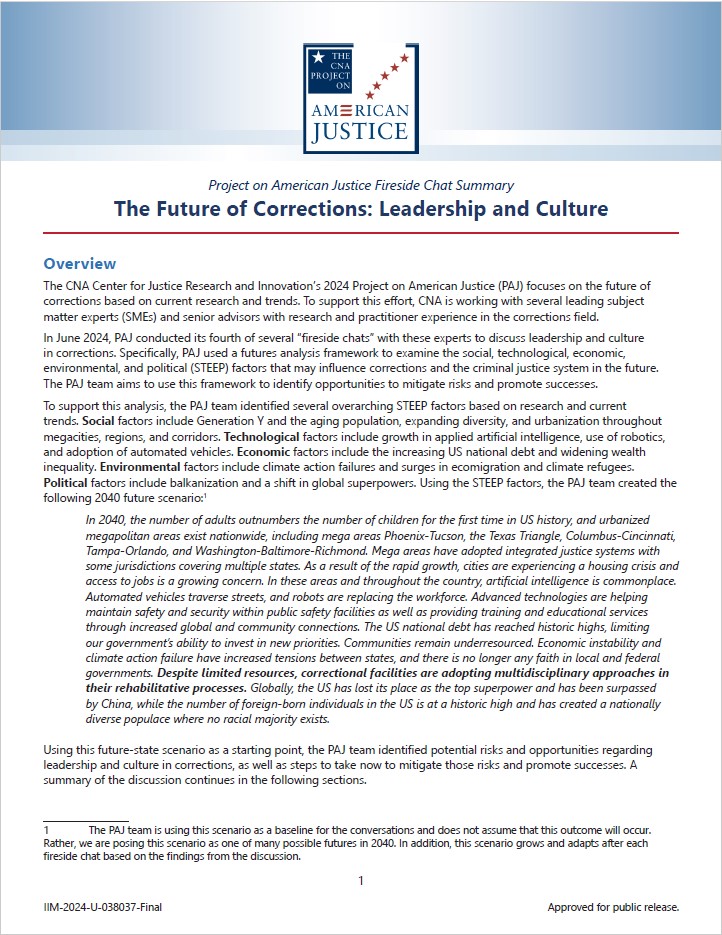Introduction
Police and correctional officers (hereafter referred to as public safety personnel) routinely confront arduous and psychologically taxing circumstances that can adversely affect their mental and emotional health. In a thorough survey encompassing 2,232 law enforcement officers, Mumford and colleagues (2021) noted that although two-thirds displayed healthy behaviors, approximately one-fourth encountered moderate health challenges, and a minority (6 percent) grappled with more severe health issues. Similarly, a separate study conducted by Drew and Martin (2023) involving 3,994 officers found that 44 percent experienced psychological distress, such as depression and anxiety within the previous four weeks, and nearly a quarter of them experienced moderate to severe distress.
Extensive research highlights the profound repercussions of poor wellness characteristics among public safety personnel, including cognitive dissonance toward society, feelings of isolation, and diminished self-worth, which potentially increase the risk of suicide attempts or deaths by suicide (Civilotti et al., 2022; Newiss et al., 2022; Stogner et al., 2020; Violanti & Steege, 2021). Thoen et al. (2020) reported that 12.4 percent of surveyed police officers expressed a likelihood of future suicide attempts, with 13.2 percent acknowledging suicidal thoughts in the past year. Moreover, compared to the general population, law enforcement officers face a 54 percent higher risk of dying by suicide (Violanti & Steege, 2021), underscoring the critical need for comprehensive wellness programs and support structures within the field.
Despite extensive research into the correlates of public safety personnel deaths by suicide, all police and public safety professions are challenged by the absence of a systematic, national, and comprehensive data collection effort to fully grasp the extent of the problem (Dixon, 2021; Malik et al., 2023; NASEM, 2023). Recognizing the critical need for accurate data in this area, Congress enacted the Law Enforcement Suicide Data Collection (LESDC) Act on June 16, 2020. Part of the LESDC Act mandates the Federal Bureau of Investigation (FBI) to establish a national data collection effort to seek incidental information on suicides, including gestures, ideation, and attempted suicides within the law enforcement community. However, initial federal efforts have been slow and have encountered numerous challenges.
The nonprofit organization First H.E.L.P. (Honor, Educate, Lead, Prevent) has been collecting data systematically since 2016 on deaths by suicide among public safety personnel. In late 2023, the CNA Corporation (hereafter “CNA”) initiated a partnership with First H.E.L.P. to undertake the first comprehensive analysis of its extensive dataset on public safety personnel deaths by suicide. This brief presents an overview of previous research and data collection endeavors related to public safety personnel deaths by suicide. It outlines the methodology employed by First H.E.L.P. for its data collection and offers descriptive insights into public safety personnel deaths by suicide. The results are organized according to the year of occurrence, agency information, geographical distribution, demographic attributes, position details, help-seeking behaviors, life challenges the person encountered before their death, and details about the death event.
Download reportApproved for public release. Unlimited distribution.
Details
- Pages: 24
- Document Number: RM-2024-U-037860-Final
- Publication Date: 3/20/2024
